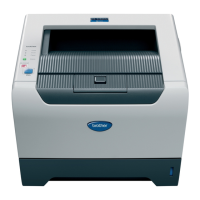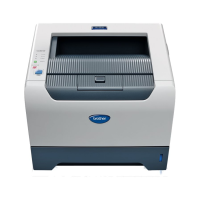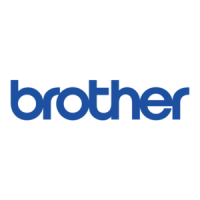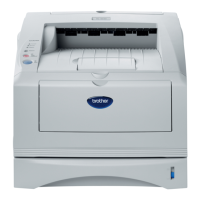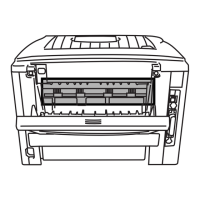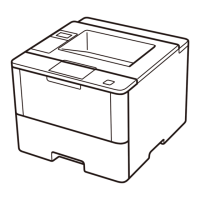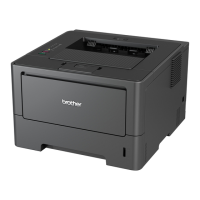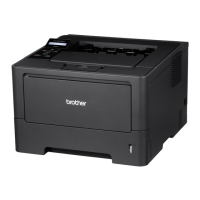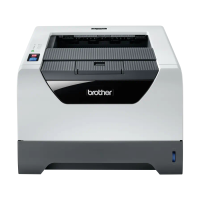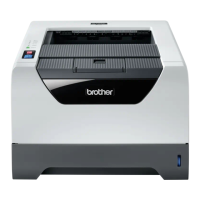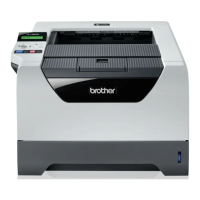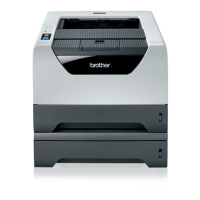Control panel setup
8 - 7
8
Note
Depending on the system, this entry might be called “bootps” instead of “bootp”.
In order to enable BOOTP, simply use an editor to delete the “#” (if there is no “#”, then BOOTP is
already enabled). Then edit the BOOTP configuration file (usually /etc/bootptab) and enter the name,
network type (1 for Ethernet), Ethernet address and the IP address, subnet mask and gateway of the
print server. Unfortunately, the exact format for doing this is not standardized, so you will need to refer
to your system documentation to determine how to enter this information (many UNIX
®
systems also
have template examples in the bootptab file that you can use for reference). Some examples of typical
/etc/bootptab entries include:
BRN_310107 1 00:80:77:31:01:07 192.189.207.3
and:
BRN_310107:ht=ethernet:ha=008077310107:\
ip=192.189.207.3:
Certain BOOTP host software implementations will not respond to BOOTP requests if you have not
included a download filename in the configuration file; if this is the case, simply create a null file on the
host and specify the name of this file and its path in the configuration file.
As with rarp, the print server will load its IP address from the BOOTP server when the printer is
powered on.
•DHCP
Dynamic Host Configuration Protocol (DHCP) is one of several automated mechanisms for IP address
allocation. If you have a DHCP server in your network (typically a UNIX
®
, Windows
®
2000/XP network)
the print server will automatically obtain its IP address from a DHCP server and register its name with
any RFC 1001 and 1002 compliant dynamic name services.
Note
If you do not want your print server configured via DHCP, BOOTP or RARP, you must set the IP METHOD
to STATIC, this will prevent the print server from trying to obtain an IP address from any of these systems.
■ APIPA
The setting of ON will cause the print server to automatically allocate a Link-Local IP address in the range
(169.254.1.0 - 169.254.254.255) when the print server cannot obtain an IP address through the IP
METHOD you have set (see IP METHOD on page 8-6). Selecting OFF means the IP address doesn’t
change when the print server cannot obtain an IP address through the IP METHOD you have set.
By default, the APIPA protocol is enabled. If you wish to disable the APIPA protocol, see Disabling the
APIPA protocol on page 8-12.
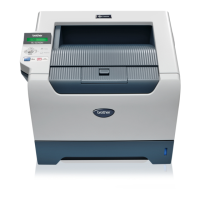
